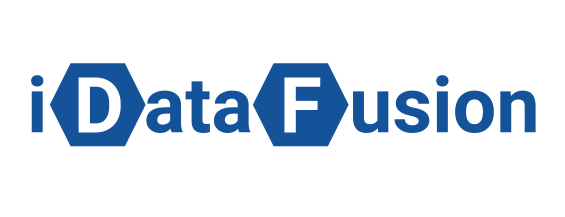Case study
How to build ROPO-analytics in an omni-channel retailer's network
About the project in general
The retailer in question is the forerunner in rest items. In 2020 the site was visited by just about 25 million clients.
The organization carried out the ROPO analytics project along with electronic check provider and iDataFusion .
The identification tool for this project is the electronic receipt, which covers more than 90% of customers. ECheck open rate exceeds 36%. Furthermore, besides the identification possibilities, e-receipts become a powerful marketing tool that has the potential to influence the development and growth of loyalty programs and sales.
iDataFusion addressed the task of setting up an end-to-end ROPO analytics and configured to export from all data sources (spend, sessions, revenue) and use GCP applications for further data aggregation and attribution calculations.
The organization carried out the ROPO analytics project along with electronic check provider and iDataFusion .
The identification tool for this project is the electronic receipt, which covers more than 90% of customers. ECheck open rate exceeds 36%. Furthermore, besides the identification possibilities, e-receipts become a powerful marketing tool that has the potential to influence the development and growth of loyalty programs and sales.
iDataFusion addressed the task of setting up an end-to-end ROPO analytics and configured to export from all data sources (spend, sessions, revenue) and use GCP applications for further data aggregation and attribution calculations.
Prerequisites for implementing ROPO-analytics
The main reason for starting the project was the need for the marketing department to more carefully manage the marketing strategy and allocate budget. To do this, multi-attribution is required to track the entire customer journey and purchase decision cycle, optimize the CRR of offline purchases, and allocate budgets to advertising channels based on complete data.
Electronic checks were chosen as the identification tool because the method used allows connecting offline and online sessions at a level of 15-20% depending on user authorization, and for better results we needed a tool that could extend the coverage. Electronic checks offer exactly this possibility. Currently, the company's overall user coverage is about 96%, and 36% of them have opened checks to provide data for ROPO.
An added benefit of introducing electronic checks is that the loyalty program increased from 52% to 82%. Both company employees and customers themselves can update customer data directly from electronic checks. In addition, e-checks provide customers with personalized offers in the marketing module, designed to encourage repeat purchases. Repeat eCheck purchases accounted for 20% of total sales.
Electronic checks were chosen as the identification tool because the method used allows connecting offline and online sessions at a level of 15-20% depending on user authorization, and for better results we needed a tool that could extend the coverage. Electronic checks offer exactly this possibility. Currently, the company's overall user coverage is about 96%, and 36% of them have opened checks to provide data for ROPO.
An added benefit of introducing electronic checks is that the loyalty program increased from 52% to 82%. Both company employees and customers themselves can update customer data directly from electronic checks. In addition, e-checks provide customers with personalized offers in the marketing module, designed to encourage repeat purchases. Repeat eCheck purchases accounted for 20% of total sales.
Working on the ROPO project
The entire project took five months. The project consisted of only three phases.
The first step was a detailed interview by the iDataFusion team, a review of the status quo, creation of technical and functional requirements and technical requirements based on these requirements. Electronic checks were subsequently introduced, enabling check data transmission. This required only two integrations - the JSON format transmitted through the API, and the placement of Java scripts on the website. After that, cross-device identification becomes possible. Typically, end-to-end analysis involves integration with ERP, CRM. Electronic checks do not require such integration, since the order data is taken from the check information. This saves a lot of project time.
The second phase was to build a dashboard that became a working tool for all marketers. Such dashboards can be created for any business needs including executives, marketers, agencies if agencies are involved in promotions.
The third stage is the budget management stage. Hypothesis formation and validation for optimization budgets. As a result, revenue and sales grow.
The first step was a detailed interview by the iDataFusion team, a review of the status quo, creation of technical and functional requirements and technical requirements based on these requirements. Electronic checks were subsequently introduced, enabling check data transmission. This required only two integrations - the JSON format transmitted through the API, and the placement of Java scripts on the website. After that, cross-device identification becomes possible. Typically, end-to-end analysis involves integration with ERP, CRM. Electronic checks do not require such integration, since the order data is taken from the check information. This saves a lot of project time.
The second phase was to build a dashboard that became a working tool for all marketers. Such dashboards can be created for any business needs including executives, marketers, agencies if agencies are involved in promotions.
The third stage is the budget management stage. Hypothesis formation and validation for optimization budgets. As a result, revenue and sales grow.
ROPO module flow diagram

ROPO module flow diagram by iDataFusion
Data flow scenarios in retailer projects and other end-to-end analytics projects involve collecting all customer behavior data from online and offline, call centers, advertising expenses of advertising accounts, further processing, merging into a single format, user identification, session connection, advertising cost allocation and its display on the dashboard. These steps of the project were implemented by the iDataFusion team using the GCP Apps platform and in the first phase provided the calculation of three attribution types: last indirect click, first click and multi-channel. Work is underway to implement ML attribution to more accurately assess the revenue impact of each channel.
ROPO dashboard

ROPO dashboard by iDataFusion

ROPO dashboard by iDataFusion
The dashboard allows you to analyze all your campaigns by region and channel. For each campaign, display the desired metrics: Sessions, Site Orders (Make and Redemption), ROPO Revenue, Ratio of ROPO Revenue to Online Channel Sales, Incremental Revenue (%) via Linear Multi-Channel Attribution, and Last-click attribution (attribution-performance comparison), online DRR, and online DRR delta considering offline.
Multichannel linear attribution allows us to understand which sources participated in the user journey and influenced decision making.
Dashboard is multifunctional. The attribution of the online budget to offline, is commensurable with the attribution to online. This can be seen on the dashboard and tracked. You can compare different algorithms and see the difference in CRR, which allows you to identify those campaigns that are underrated in terms of their impact on offline purchases.
Consequently, you can see where and which campaigns are impacting offline purchases. However, also you can reallocate the budget from those campaigns that aren't generating profit, or have a high CRR, If these campaigns do have potential.
CASE STUDIES
CONTACT US
Drop us a note and we'll get back to you within a day
